
Leveraging the Powerful Links Between Work and Health
Recent studies from faculty and doctoral students in the Occupational and Environmental Health Nursing (OEHN) program at UC San Francisco (UCSF) School of Nursing have continued a long tradition of investigating overlooked health risks for workers – particularly socioeconomically disadvantaged and understudied groups – and finding ways to reduce those risks.
The recent studies found that hospital cleaning workers and dry cleaners are often unnecessarily exposed to unhealthy levels of toxic chemicals; taxi drivers experience elevated levels of stress, musculoskeletal pain and physical danger; and young people who’ve had difficult childhoods are at heightened risk for a range of work-related injuries and illness.
These workers are particularly vulnerable because they have often have little power to change their working conditions, few in-house health protections and spotty awareness of the risks or how best to address them. Yet they represent only a small sample of the working environments where individuals could benefit from more robust occupational health programs.
In fact, many people work in conditions that can and do adversely affect their health and safety and drive up health care costs. According to the Northern California Center for Occupational and Environmental Health (COEH) – of which the School’s program is a part – every day an average of 9,000 US workers sustain disabling injuries on the job, 15 die from a workplace injury and another 137 die from work-related illness.
Over the last few decades, many employers have recognized these dangers and found economic, regulatory and moral imperatives to keeping workers healthy and on the job. In the belief that the workplace holds significant leverage for changing people’s health behaviors, some organizations have even instituted programs that go beyond protecting people from work-related risks to include health and wellness programs such as smoking cessation, support for exercise and stress reduction.
The belief that the workplace holds significant potential to improve population health and the health of vulnerable workers is a central tenet of the Northern California COEH, which includes diverse disciplines from UCSF, UC Berkeley and UC Davis. The center recently had its National Institute for Occupational Safety and Health (NIOSH) funding renewed for another five-year period (2015-2020), a cycle of success that recognizes more than 35 years of important work in which the School of Nursing’s program has played an important role.
The School and the COEH
The COEH was established as a permanent part of UC in 1980 with a California law that, according to the COEH website, mandated that “the University…establish teaching, research, and service centers…[to] serve government, industry, schools, health professionals, and the general public through programs and partnerships designed to deepen understanding of occupational and environmental hazards and to prevent disease, fatalities, and injuries.”
 OiSaeng Hong The centers were envisioned as multicampus, multidisciplinary teaching and research programs to educate future leaders, develop new knowledge and bring the University of California’s resources to the general public. Today, the COEH is one of 18 university-based Education and Research Centers (ERCs) nationwide that NIOSH funds. Of the 18, only 11 have NIOSH-funded OEHN programs, according to OiSaeng Hong, who directs the School’s OEHN program.
OiSaeng Hong The centers were envisioned as multicampus, multidisciplinary teaching and research programs to educate future leaders, develop new knowledge and bring the University of California’s resources to the general public. Today, the COEH is one of 18 university-based Education and Research Centers (ERCs) nationwide that NIOSH funds. Of the 18, only 11 have NIOSH-funded OEHN programs, according to OiSaeng Hong, who directs the School’s OEHN program.
“One important aspect of the funding is that at the School of Nursing we are able to support fellowships that help with tuition for master’s and PhD students as well as stipends and research funds for PhD students, and [that] allows us to emphasize producing a diverse nursing workforce,” says Hong. “This is significant because of the extreme numbers of workers in California who are employed in high-risk sectors – such as agriculture, construction and shipping – and the very limited number of OEH nurses available here.”
The fellowships and the ready availability of jobs in occupational health help attract a steady stream of students. With increasing numbers of companies that are interested in employing nurse practitioners (NPs) because they can also provide primary care, case management and injury prevention expertise, the School’s OEHN program supplies a much-needed workforce of nurse practitioners and occupational health specialists. Many have gone on to leading roles in occupational health at the local, state and national levels.
“The Occupational and Environmental Health Nursing program is the premier teaching program in our center, which is no small accomplishment because our other programs are very good,” says occupational and environmental health physician John Balmes, who directs the COEH.
Interdisciplinary Work Enhances Nursing’s Role
The other programs are not only very good, but also valued collaborators. Occupational health has a long tradition of diverse disciplines working closely together, and much of the work at the COEH reflects that tradition.
Faculty members from UCSF schools of medicine and nursing co-teach some occupational and environmental health classes. Joint research has looked at everything from how to mitigate or prevent long-term disability after workplace injury to programs that help low-wage workers improve their health on the job.
“Nurses are better trained to consider the whole person and nonwork contributors to ill health, so when we do joint teaching, they bring that perspective on the social and behavioral determinants of health to physicians’ greater knowledge of pathophysiology,” says Balmes. He believes this makes for stronger graduates from both disciplines.
The deep respect for nursing science also reflects occupational health practice, where nurses are often frontline providers. “The workplace is a good place to start in terms of preventing illness – and a perfect one for nursing, with its focus on disease prevention and health promotion,” says Professor Emerita Barbara Resnik, who founded and led the program for many years at the School of Nursing.
Graduates Help Create a Healthier World
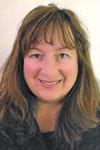 Melinda Vertin In the late 1980s, Melinda Vertin was working at UCSF as a staff nurse in the chest, allergy and immunology clinic when she began to explore advanced practice options. By 1993, she had earned her master’s degree in occupational health and an adult nurse practitioner credential. “It was a fantastic program,” she says.
Melinda Vertin In the late 1980s, Melinda Vertin was working at UCSF as a staff nurse in the chest, allergy and immunology clinic when she began to explore advanced practice options. By 1993, she had earned her master’s degree in occupational health and an adult nurse practitioner credential. “It was a fantastic program,” she says.
Over the next decade, she worked as an NP in primary care and neurosurgery, returned to occupational health at Intel, where she had completed an internship, and began a family. In 2004, she wound up at the multinational corporation Johnson & Johnson (J&J), where she has risen to director of Strategy, Governance and Communication for the Global Health Services group, responsible for the health and well-being of 125,000 employees worldwide.
She does that in an organization that has a deep commitment to workers’ health, which stretches back decades. Over the years, J&J has established on-site clinics for all of its major manufacturing and R&D locations; these clinics focus not just on traditional occupational health concerns – workplace injury and illness – but also on wellness programs, disability support and on-site mental health services.
Recently, Vertin became part of a core team focused on ensuring consistency of health care programs for workers around the globe through the centralized management of these services. Successful pilots in India and China led to a full global program rollout, and Vertin notes that playing an instrumental role in devising and implementing such programs requires program management experience as well as the type of training she received during her education.
“It’s helped, because I am constantly looking at all this anonymous, aggregated data to understand what our population health looks like, so we can focus our attention on the right goals,” she says. “Right now, for example, despite improvements, unhealthy eating and lack of physical activity remain our top two concerns, so we’re working to better move the needle with options like subsidizing free fruits and vegetables and finding ways to encourage the 90 percent of our employees with access to use the fully equipped on-site or local (with membership subsidized by J&J) gyms.”
Pioneering the NP Role at Genentech
Anne Marie Tsolinas graduated from the School’s program in 1998. By 2000, she was working at the biotech giant Genentech, which at the time had only 3,000 employees. Today there are close to 12,000, plus a fair amount of contingent workers.
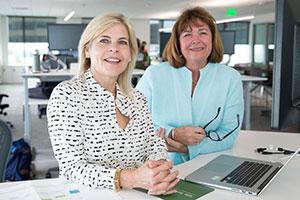 Anne Marie Tsolinas (left) and Helen Chaknova at Genentech (photo by Elisabeth Fall) In Tsolinas’ early days at the company, occupational health was mostly limited to medical surveillance of employees working with hazardous materials and a minimum of on-site treatment, which was primarily provided by a consulting physician.
Anne Marie Tsolinas (left) and Helen Chaknova at Genentech (photo by Elisabeth Fall) In Tsolinas’ early days at the company, occupational health was mostly limited to medical surveillance of employees working with hazardous materials and a minimum of on-site treatment, which was primarily provided by a consulting physician.
“We were not doing much treatment of injuries and illness, but I was an NP, as was my manager, and we were able to expand the role and demonstrate its value,” says Tsolinas. “Things that we used to send off-site for evaluation and treatment – like cumulative trauma disorders of upper extremities – we began to handle in the Campus Health Center. Shortly, we were conducting most of the medical surveillance exams as well.”
Today, Tsolinas and her team manage most of the programs within what Genentech calls its health@work department, which includes a variety of services, including the Campus Health Center. And the growth of the center prompted the company to eventually hire an independent on-site health company – Premise Health – to provide the clinical staff for the center’s expanding services. That’s where Helen Chaknova, another School alumna, entered the picture.
In 1982, Chaknova was one of the first graduates of the School’s Occupational Health Administration track. After a stint consulting in industry, she became interested in wellness programs in acute care settings and joined Premise Health three years ago. At Genentech, she runs the Campus Health Center, which today offers services that include medical surveillance, occupational injury treatment and case management, a growing volume of convenient care – which involves helping people on campus take care of their episodic illness – as well as health coaching and travel health.
“Our role is to make this a healthier place to live and work,” says Chaknova.
The presence of Chaknova and Premise has freed up time for Tsolinas and her staff to develop and manage an expanding array of other health-related programs, including health kiosks where employees can monitor their blood pressure and learn about potential health risks, consulting on new building construction and producing an evidence-based newsletter with the goal of enhancing employee health awareness.
“Providing services focused on creating a culture of health is investing in our people and shows employees how valuable they are” says Tsolinas. “It’s an important part of what makes Genentech a great place to work.”
Researchers Turn to Underserved Settings
While large organizations like J&J and Genentech institute far-reaching occupational health programs for large numbers of employees, the School’s faculty and PhD students have dedicated a lot of their efforts to the health and safety of those who have fewer resources at work.
Soo-Jeong Lee and Hospital Cleaning Workers
 Soo-Jeong Lee Faculty member Soo-Jeong Lee’s research focuses on work-related injury and illness in health care settings. She arrived at the School after completing a postdoctoral fellowship at NIOSH, where she examined pesticide-related illness among health care workers.
Soo-Jeong Lee Faculty member Soo-Jeong Lee’s research focuses on work-related injury and illness in health care settings. She arrived at the School after completing a postdoctoral fellowship at NIOSH, where she examined pesticide-related illness among health care workers.
“In health care, infection control is very important, and I came across data that indicated cleaning workers might be exposed to high levels of disinfectants,” says Lee.
When she arrived at UCSF, she conducted a survey of cleaning workers both at the UCSF Medical Center and on the campus to investigate symptoms associated with exposure to cleaning and disinfecting chemicals – including respiratory, skin, eye and neurological problems – as well as the risk factors for acute symptoms.
“The data is clear that these symptoms are very frequent among hospital cleaning workers, and interventions are needed to prevent acute and chronic health effects,” says Lee, who found that out of 183 workers surveyed, more than one in ten experience symptoms daily, and more than half had experienced symptoms in the prior 12 months. The prevalence was higher among those cleaning in clinical areas.
In addition, the reporting of symptoms appears to differ by gender and ethnicity, says Lee. Female workers were less likely to report symptoms than male workers, and Asian workers – who comprised about 65 percent of the study sample – were less likely to report symptoms than colleagues of other races and ethnicities.
Finally, Lee’s study also found that only 37 percent of the workers used safety goggles regularly and only 16 percent used face shields regularly.
“The study indicates there is a need to reduce exposure and symptom experience by doing things like using safer cleaning alternatives and improving safety practice,” says Lee. She notes that while this study was small, there are over 3 million cleaning workers in the US, about 13 percent of whom work in health care settings – and as far as occupational health is concerned, they are an understudied and underserved population.
Sahar Nouredini and the Dangers of Working in the Dry-Cleaning Industry
While working as an oncology nurse at UC Davis Medical Center in the late 2000s, recent PhD graduate Sahar Nouredini had noticed anecdotally that certain workers – especially low-wage workers – seemed to develop specific cancers and had poorer health outcomes.
“I wanted to understand the health impact of chemical exposure…which made me curious to go back to school,” she says, explaining how she wound up in the School’s OEHN PhD program.
As luck would have it, Hong – the OEHN program’s director – already had a usable data set on chemical exposure and illness in the dry-cleaning industry from her NIOSH-funded Korean Dry Cleaners project. (Hong is nationally recognized for her research on health disparities; her work includes the reduction of health risks and improved health education for underserved immigrant populations.)
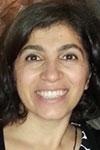 Sahar Nouredini “It’s an interesting population because many dry-cleaning facilities are small, family-run businesses where many workers have limited formal education, many speak a language other than English, and they work with solvents that we know can negatively affect the central nervous system (CNS),” says Nouredini.
Sahar Nouredini “It’s an interesting population because many dry-cleaning facilities are small, family-run businesses where many workers have limited formal education, many speak a language other than English, and they work with solvents that we know can negatively affect the central nervous system (CNS),” says Nouredini.
The primary chemical offender is perchloroethylene, or PCE. California has banned the use of PCE beginning in 2023, but the current federal Occupational Safety & Health Administration (OSHA) permissible exposure limit is set at 100 parts per million (ppm).
In reviewing Hong’s data, Nouredini found not only that the majority of dry-cleaning workers (88 percent) used PCE – as well as other solvents, whose effects are less well known – but that even at assumed exposure levels of 11 ppm, workers were demonstrating CNS-related symptoms that included tinnitus, memory loss, loss of visual perception and dizziness.
“The workers in the highest exposure group were more likely to experience memory loss and loss of visual perception.… And the literature suggests that some of these symptoms may be irreversible,” says Nouredini.
Nouredini also found that approximately 67 percent of those in her study were not receiving any training on how to avoid chemical exposure, and most were not using personal protective equipment such as respirators, masks and gloves. In addition, she noted that changing chemicals means that the dry cleaner must buy expensive new machines – a considerable deterrent to change.
While she cautions that there were several important limitations to her research and more work must be done to confirm her findings, Nouredini believes that at the very least, the current permissible exposure limit is set too high. In addition, if her findings are confirmed, she hopes her work can influence policy efforts that create incentives for dry cleaners to replace their existing machines.
Barbara Burgel and the Health Risks of Driving a Cab
Faculty member Barbara Burgel has spent most of her clinical and research career working effectively with vulnerable populations. In 2009, she was called in to help implement stress management strategies for San Francisco’s 7,000 taxi drivers, but the work eventually expanded into an important research effort that continues to this day.
In a descriptive study published in 2012 in the Journal of Urban Health and aimed at understanding drivers’ health challenges, Burgel and her colleagues found the drivers were particularly concerned with stress, body pain, danger, vulnerable employment status and unhealthy working conditions. And while the study also identified a range of strategies drivers use to cope with these concerns, Burgel says the challenges of the job often overwhelm drivers’ self-care efforts.
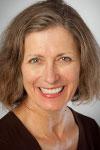 Barbara Burgel “Few had health benefits at the time, and they were often at the mercy of both dispatchers and passengers, which was enormously stressful, especially when passengers were drunk and rowdy and didn’t always pay their fares,” she says.
Barbara Burgel “Few had health benefits at the time, and they were often at the mercy of both dispatchers and passengers, which was enormously stressful, especially when passengers were drunk and rowdy and didn’t always pay their fares,” she says.
Burgel then dug deeper into concerns about danger on the job. She surveyed 130 drivers on the topic, and nearly half reported a history of violence during their driving careers – a physical assault, a weapon confrontation or a robbery. More than one in 10 had been physically assaulted in the 12 months prior to their interview.
Burgel says her goal now is to present all of her data to the San Francisco Municipal Transportation Agency, in the hope her work can prompt evidence-based policy changes, such as re-exploring the role of cab partitions to prevent violence, and adding more violence prevention training for drivers.
Yet Burgel knows achieving that change is linked with a host of thorny issues that cross disciplines. These include addressing whether taxi drivers – who often function as independent contractors, without the protection of Cal/OSHA standards – should have or even want employee status, as well as the need to tailor educational approaches to diverse populations with distinct languages and cultural beliefs. These are areas where advanced practice nurses trained in occupational health have particularly apt expertise.
Karen Hill and Protecting Young People at Work
Karen Hill recently earned her PhD from the School’s OEHN program. During her time in the program, she was also a practicing NP and clinic manager at Glide Health Services in San Francisco’s Tenderloin neighborhood.
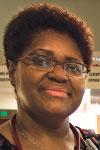 Karen Hill Hill’s dissertation focused on the emerging adults (18 to 30 years old) who came to Glide for their health care and have unusually high ACE scores – meaning they had an unusual amount of “adverse childhood experiences.” In particular, Hill wanted to explore the connection between ACE scores, youth employment and occupational injury.
Karen Hill Hill’s dissertation focused on the emerging adults (18 to 30 years old) who came to Glide for their health care and have unusually high ACE scores – meaning they had an unusual amount of “adverse childhood experiences.” In particular, Hill wanted to explore the connection between ACE scores, youth employment and occupational injury.
Using a survey tool she developed and electronic health record data from Glide, Hill determined her emerging-adult patients were twice as likely to have an occupational injury as those who didn’t have such high ACE scores. Those with higher self-reported ACE scores also tended to experience more job loss, depression, obesity, sexual assault, substance use and mental health disorders. She also knew that persistent and untreated chronic trauma has an effect on memory and learning and that the self-esteem issues associated with persistent trauma can affect young people’s ability to recognize and report workplace safety concerns.
“Primary care providers often wonder why patients are unable to achieve meaningful progress towards healthier lifestyles, but I would offer that perhaps we are asking the wrong questions and not getting to the root causes. If primary care providers screened for ACEs in emerging adults like we screen for blood pressure or depression, they could intervene earlier and perhaps reduce chronic illness,” says Hill. “And when employers begin to acknowledge that social context affects worker health, job productivity and the bottom line, maybe they could create developmental worker training and support systems that could improve the lives of emerging adults as well as the health of the community.”
This, she believes, could also create more-productive employees who are less likely to lose time due to illness or injury.
“We now know…the higher your ACE score, the more likely you are to be prone to things like diabetes, asthma and substance abuse, all of which can affect your job performance,” says Hill. “Work, trauma and health are inextricably linked and must be addressed if we are going to improve the health of the nation.”
Pounding the Drum for Occupational Health Nursing
It is that concept – that health and work are powerfully related – that drives a lot of the people drawn to the field of occupational health.
The challenge, says Balmes, is that occupational health doesn’t have the status in the US that it does in many other developed countries. “OSHA is chronically underfunded, and occupational health is not considered sexy among medical practitioners because we don’t have procedures – fancy stents or scopes,” he says. “But occupational health can be really exciting, because it involves interesting detective work, figuring out what causes one group of workers to have one particular problem.”
And perhaps those involved in the field draw satisfaction from understanding the ever-increasing impact of their work.
“At J&J, we are starting to look a lot more closely at a holistic well-being component – for example, understanding the role of work/family balance in stress and how that has a ripple effect elsewhere…because we know if we can make an impact on our employees, we can have an impact on families and ultimately on communities,” says Vertin.
“Occupational health is recognition that the types of jobs people do influence their health status,” says Burgel. “The power of the workplace is huge.”



